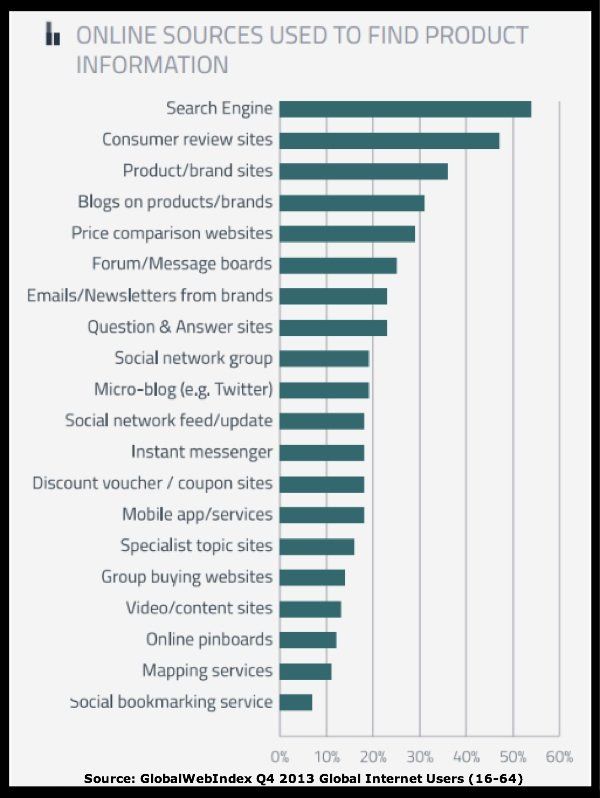Top 5 Content Delivery Platforms For Getting Your Offering Seen, Heard and Out There into The World
Did you know that 94% of small businesses (less than 99 employees) use some form of content marketing to grow their businesses? That’s a staggering number, and almost hard to believe.
But it’s true. Yes, nearly every small business out there is creating:
- blogs,
- articles,
- eBooks,
- white papers,
- newsletters and
- more to try to attract and retain customers.
And then nearly all of those are pushing that content out in the form of tweets, Facebook posts, Google+ updates, and LinkedIn updates.
To provide guidance in establishing your content delivery platform, let’s examine Global Web Index’ s 4Q2013 research results.
The top 3 product information sources are:
- Search engines
- Consumer review sites
- Product/brand websites sites
The key to effective content distribution is choosing the same social platforms your target audience uses. Here are the top 5 content delivery platforms for getting your message seen, heard, and out there in the world:
- Search engines . Led by Google and YouTube, search engines have topped the distribution list for years.
- Customer review sites . Customers trust other customers, not marketers. In this category includes Amazon, TripAdviser and Yelp. If you don’t offer reviews, they’ll seek them elsewhere including from your competitors.
- Product/brand sites . As part of the research phase, customers seek deep product information. The more you provide without the promotion, the better it will perform.
- Blogs on products/brands . These sites are similar to product sites. Use of blogging software and structure helps your search rankings.
- Price comparison sites . Depending on your offering, price matters. In today’s connected world, your competitor is a click away. Potential buyers will still research and check the price before they purchase.

Content Delivery Note: Your audience’s activity and preferences may differ significantly from GWI’s research. Therefore, you need to take the time to get to know your target audience including what customers believe, the story they tell themselves, the end users, the way to satisfy them, barriers to entry, costs, outside influences, budgets, knowledge, and you need to know where they seek product information.
Once you establish your content delivery platform checklist, continually test it to make modifications and changes based on your audience.




